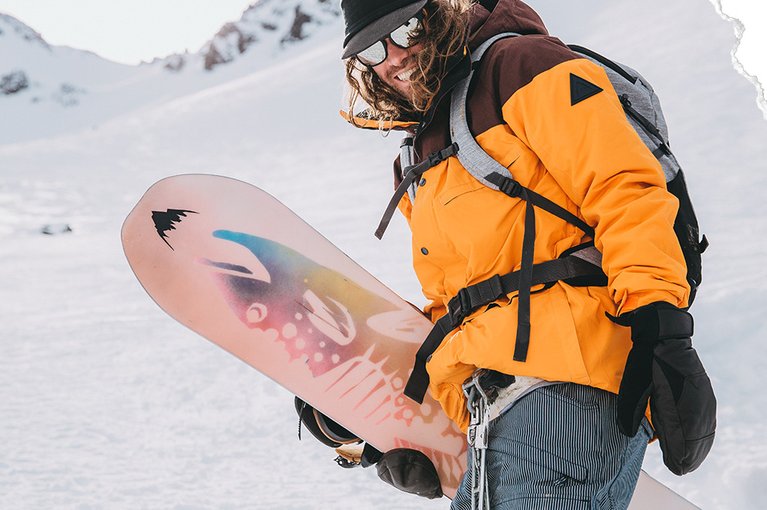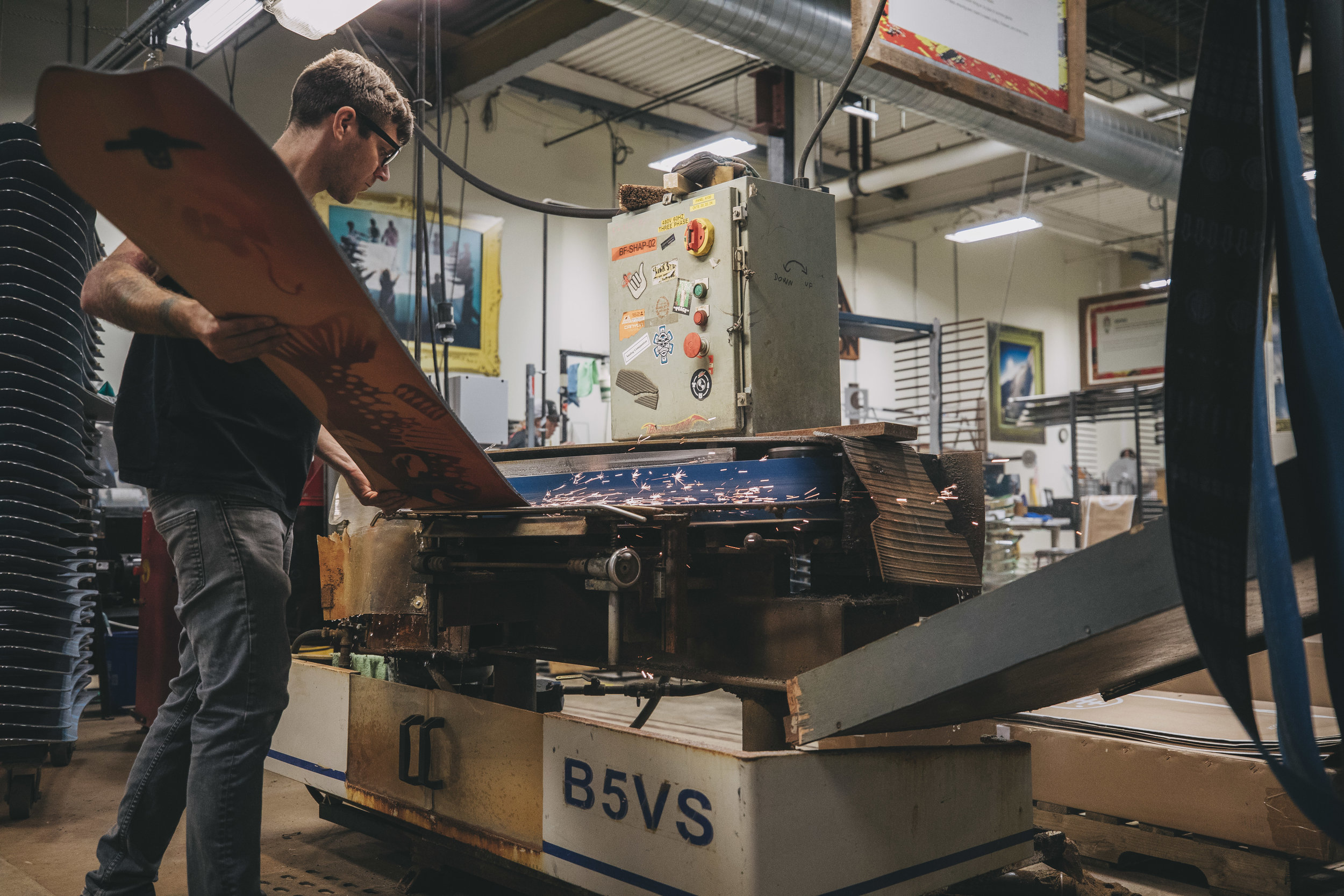Once the raging party of youth fades away, we look into the horizon for what’s next. Our lives roll through various cycles or stages until inevitably, the end hits. What happens after death? Although the answer to human existence isn’t totally clear, Burton has begun to resolve this next phase of life for their snowboards.
Upcycling is the end of a snowboard’s life, or the beginning of a new one, depending on which angle you choose to look at. To understand the whole story, we must go back to the beginning of how the board came to life and follow along its youthful journeys. For about half of Burton’s snowboards, the adventure begins in Austria. For over 30 years Keil, the snowboard-producing factory, has been striving for sustainability in its operations. Functioning like a real-life Santa’s workshop, the Austrian factory runs on 100% renewable energy with most materials being sourced within a 250-mile radius. Additionally, the factory has a closed-loop process in which water used in production is recycled, resulting in a 50% reduction in water usage. The icing on this too-good-to-be-true cookie? The Austrian factory collects snowboard core scraps and uses these to heat the factory and all the presses while also recycling sidewall and base scrap materials. And that’s just the beginning.
A Burton board is no ordinary plank of wood. In fact, nowadays all the boards produced by Burton have 100% FSC™ Certified wood cores. What does FSC Certified mean? FSC Certified wood has been sourced from responsibly managed forests and is verified to “not be harvested: illegally; in violation of traditional and civil rights; in forests where high conservation values are threatened; in forests being converted to plantations or non-forest use; and in forests where genetically modified trees are planted.”
In addition to having a solid source for the boards’ cores, Burton has been producing their entire line-up with Super Sap® Epoxy, a board resin using bio-based materials that reduces the carbon footprint by 50%. Burton has a goal of a 20% total carbon footprint reduction for all of their hard goods by 2020.








